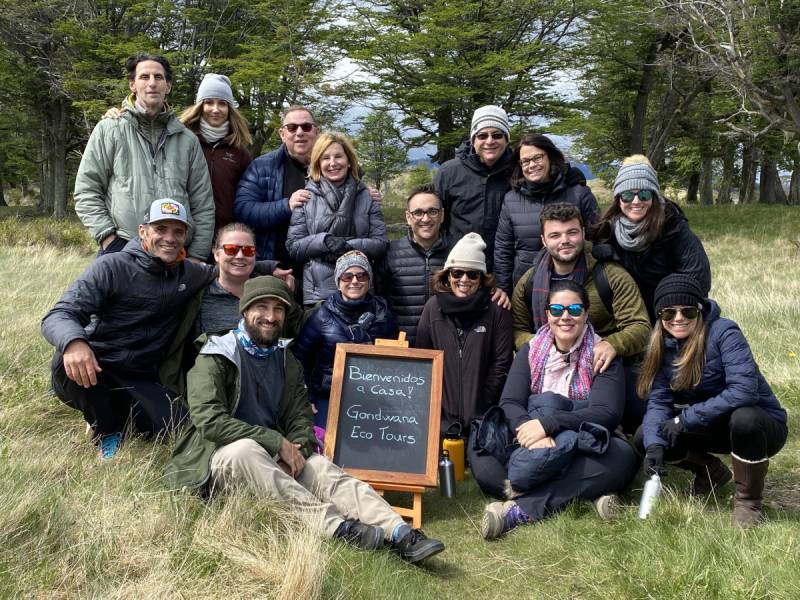Awesome Wildebeest Migration Tours In Tanzania
Download Travel Details >PRIVATE & SMALL GROUP TOURS TO THE WORLD'S BEST DESTINATIONS
Join Us For A Safari In Tanzania

What Is The Great Wildebeest Migration?
The Great Serengeti Wildebeest Migration is the annual movement of the Serengeti's wildebeest, accompanied by large numbers of zebra, and smaller numbers of gazelles, elands, and impalas. This massive herd of animals moves in a predictable pattern throughout the year, across the vast Serengeti plains of Tanzania and into Kenya’s Masai Mara Reserve. Each year, thousands of tourists enjoy Great Migration tours across the Serengeti, following the herd as it crosses dangerous territory in search of food and water.
When Is The Best Time To See The Great Migration In The Serengeti?
The precise timing of the Great Migration in the Serengeti depends upon the rainfall patterns each year. The wildebeests, also called gnus, follow the annual rains in search of grasslands to sustain the herd. However, this search for greener pastures does not come without danger. The migration route crosses many rivers, most filled with giant Nile crocodiles. Predators also lie in wait for the herd’s weakest members, hoping for an easy meal once a straggler is spotted.
For those interested in a wildebeest migration tour, knowing where to see the great migration is key! Below you’ll find a month-by-month explanation of where the herd is at any given time during the year.
- November – December: the short rains begin in early November. Shortly after, the great herd arrives on the short-grass plains of the Serengeti, near Ndutu and the Ngorongoro Conservation Area. The lush grasses of the plains will sustain the herd through March.
- February: the wildebeest calves are born. As many as 500,000 calves can be born in a single year! This culminates in over a million wildebeest in the Great Herd, which is said to be one of the seven wonders of the natural world.
- March – April: the great migration in the Serengeti begins to move north.
- May: The Great Migration continues as the herd seeks fresh grazing and water. At this point in the year, Wildebeest Migration Tours focus on the area around Moru Kopjes, just west of the Seronera. Here, safari-goers can see the hectic, galloping herd of wildebeest, zebras, and gazelles.
- June: the herd has reached the south side of the Grumeti River, where it prepares for its first river crossing. The wildebeest will congregate along the Western Corridor, often building up to a high density before attempting the crossing.
- July – August: the herd continues to move northward, spreading out through the Grumeti Reserve and Ikorongo.
- September: the great herd has reached the Mara River, the most serious obstacle on the entire journey. Many seasoned safari-goers will tell you this is where to see the Great Migration! Watching the frantic herds of wildebeest crossing the Mara River en route to Kenya’s Masai Mara Reserve is a spectacular sight.
- October: after a short stint in Kenya, the great herd is once again on the move. This time, the animals are heading south through western Loliondo and the Serengeti National Park’s Lobo area, toward the short-grass plains of the Southern Serengeti, where the annual cycle will begin again!
How Can I See The Great Migration?
Now that you know where to see the Great Migration, you are probably wondering how to see the great herd once it is on the move. The best way to experience this incredible sight is to reserve a spot with a wildebeest migration tour. This way, you can leave the logistics to a professional guide, who will make sure you have the perfect vantage point to watch the animals thundering across the plains.
One of the best tour operators in Tanzania is Gondwana Ecotours. This group curates bucket list trips to unique destinations excitingly and responsibly. Gondwana is a leader in sustainable travel, maintaining an environmental and cultural focus while providing travelers with the vacation of a lifetime. The group’s 10-day Great Migration Safari Tour includes:
- A guaranteed window seat during game drives in a private pop-top Land Cruiser with a local guide, while exploring Arusha National Park, Tarangire National Park, Ngorongoro Crater, Lake Manyara, and Serengeti National Park.
- Lodging for all nine nights, with accommodations ranging from unique hotels to deluxe tented safari camps with private bathrooms.
- All meals, including breakfast, lunch, and dinner - except for the first and last day.
- A local Gondwana driver and safari guide for the entire trip.
- All National Park entrance fees in Tanzania.
- A visit to a Maasai Village, where you will experience a welcoming community far off the beaten path.
- All other activities and excursions, including safaris and guided hikes.
It is strongly recommended that visitors take a guided Wildebeest migration tour. Navigating the roads in Tanzania is difficult, especially in the national parks, where many are not marked on maps and GPS devices will not work. Booking a tour with a reputable operator like Gondwana Ecotours means that you’ll be able to relax and enjoy the sights of the Great Migration in Serengeti without having to worry about the logistics of the trip!
Tips For Planning A Great Migration Serengeti Tour
Safaris in Tanzania are very popular with tourists, but Great Migration safaris are some of the most sought-after experiences in the country! If you want to experience the Great Migration in Tanzania, here are a few tips to help you plan your trip:
- Book at least a year in advance: Lodges and camps fill up fast, especially for a Wildebeest Migration Tour from June to October. Remember, this is safari’s high season and when the popular river crossings happen, but you can see the herds any time of the year.
- Time your trip carefully: The Great Migration is a fluid, often unpredictable event. It’s important to know where to go and when to go on a Great Migration Serengeti safari to ensure your expectations are met. Choose and arrange your timing according to what you want to see and experience.
- Avoid the crowds: The Masai Mara National Reserve and Serengeti National Park experience high visitor and vehicle numbers during the safari’s peak season. To avoid the crowds, consider visiting the private conservancies adjoining these two areas instead. You’ll also be offered activities not permitted in the main reserve, such as night drives, bush walks, and off-road game viewing.
- Diversify your game viewing: A wildebeest migration tour can be very busy, and may not allow you to see Africa’s Big 5. Ending your trip with a stay at a lodge or camp that’s located away from the great herd to enjoy a bit of tranquility can also diversify your game-viewing experience.
Follow The Wildebeest For A Once-In-A-Lifetime Adventure!
Tanzania’s Great Wildebeest Migration is the largest land migration of mammals in the world. No other experience compares in scale to the huge numbers of incredible animals that are a part of this migration. For wildlife enthusiasts, this is a once-in-a-lifetime experience that is unlike any other. If you’re looking for a unique experience, following the great herd across the sweeping plains of the Serengeti is a bucket list experience you can’t afford to miss!

